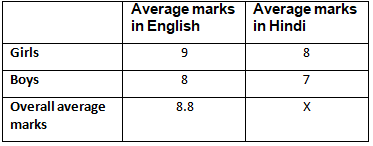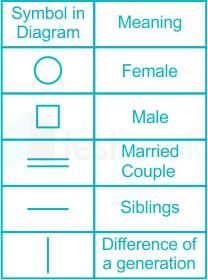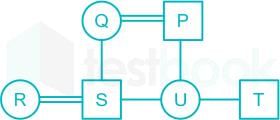UPSC Prelims Past Year Paper 2020: Paper 2 (CSAT) - UPSC MCQ
30 Questions MCQ Test UPSC Previous Year Question Papers and Video Analysis - UPSC Prelims Past Year Paper 2020: Paper 2 (CSAT)
Read the following passage and answer the item that follow. Your answer to these item should be based on the passages only.
Passage—1
In India, over the last decade or so, labour has been departing agriculture, but is only going to construction and unregistered manufacturing which are not markedly better jobs. Services, where labour tends to be most productive, are not generating the additional jobs the country needs. India will need 24 million or so jobs over the next decade. The new sector, e-commerce, can at best close only half the jobs gap. Only those sectors that drive domestic demand such as health and education can comfortably fill the other half.
Which one of the following is best Implied in the passage?
Read the following passage and answer the item that follow. Your answer to these item should be based on the passages only.
Passage-2
In India, the current focus on the right to privacy is based on some new realities of the digital age. A right is a substantive right only if it works in all situations, and for everyone. A right to free expression for an individual about her exploitation, for instance, is meaningless without actual availability of security that guarantees that private force cannot be used to thwart this right. The role of the State, therefore, is not just to abstain from preventing rightful free expression, but also to actively ensure that private parties are not able to block it.
On the basis of the above passage, the following assumptions have been made:
1. State should have some institutions to ensure its appropriate role in a digital society.
2. State should ensure that private parties do not violate the citizens' right to privacy.
3. Digital economy is not compatible with the idea of not violating the citizens’ privacy.
Which of the above assumptions is/are valid?
On the basis of the above passage, the following assumptions have been made:
2. State should ensure that private parties do not violate the citizens' right to privacy.
3. Digital economy is not compatible with the idea of not violating the citizens’ privacy.
| 1 Crore+ students have signed up on EduRev. Have you? Download the App |
Read the following passage and answer the item that follow. Your answer to these item should be based on the passages only.
Passage—3
One of the biggest ironies around water is that it comes from rivers and other wetlands. Yet it is seen as divorced from them. While water is used as a resource, public policy does not always grasp that it is a part of the natural ecosystem. Efforts at engineering water systems are thus efforts at augmenting water supply rather than strengthening the capacities of ecological systems.
Which one of the following is the most logical and rational inference that can be made from the above passage?
Read the following passage and answer the item that follow. Your answer to these item should be based on the passages only.
Passage-4
Asset allocation is the most important investment decision we will ever make, and sadly, most of us do not give that decision the importance it deserves. We are adamant about seeking predictability with our future. We tend to think of investing in risky assets as extremely volatile and value eroding. We also dislike fluctuating returns and the loss of control of investment. We think our money is best left idle unproductive but safe. There is no asset that is risk-free. We could lose our jobs, our homes can lose value, our banks can go bankrupt, our bonds can default, the government can collapse and companies we chose fondly may cease to exist. But we cannot live life assuming that all these extreme events are waiting to happen, and all at the same time. All these extreme forms or risks we know will not manifest at the same time.
Which one of the following statements best implies the suggestion given by the author of the passage?
Read the following passage and answer the item that follow. Your answer to these item should be based on the passages only.
Passage-5
Although most of the Genetically Modified (GM) crops cultivated now are genetically engineered for a single trait, in future, crops genetically engineered for more than one trait will be the norm. Thus, biotechnology's role in agriculture and the regulation or the same cannot be understood solely in the context of the current generation of GM crops. Instead, there is a need to take a comprehensive look, taking into account various aspects, including socio-economic impacts, so that the potential or the technology can be harnessed while minimizing negative impacts. Given the importance of biotechnology in developing varieties that can help in climate change mitigation and adaptation, not using biotechnology as a part of the climate change action plan cannot be an option. Domestic regulation of biotechnology cannot be viewed in isolation of trade policy and obligations under various international treaties and conventions.
With reference to the above passage, the following assumptions have been made:
1. Biotechnology regulation is an evolving process.
2. Participation of people is needed in policy decisions regarding biotechnology regulation.
3. Biotechnology regulation should take into account socio-economic aspects in decision-making.
4. Wider involvement of political executive in biotechnology regulation improves its effectiveness in dealing with the country’s trade Policies and international obligations.
Which of the above assumptions are valid?
Which one of the following statements best implies the crux of the passage?
How many zeroes are there at the end of the following product ?
1 × 5 × 10 × 15 × 20 × 25 × 30 × 35 × 40 × 45 × 50 × 55 × 60
Let XYZ be a three-digit number, where (x + y + Z) is not a multiple of 3. Then (XYZ + YZX + ZXY) is not divisible by
Let p, q, r and s be natural numbers such that p - 2016 = q + 2017 = r – 2018 = s + 2019 which one of the following is the largest natural number?
How many five-digit prime numbers can be obtained by using all the digits 1, 2, 3, 4 and 5 without repetition of digits?
In the sum ®+1®+ 5®+®®+®1= 1®® for which digit does the symbol ® stand ?
If you have two straight sticks of length 7.5 feet and 3.25 feet, what is the minimum length you can measure?
A simple mathematical operation in each number of the sequence 14, 18, 20, 24, 30, 32, ..... results in a sequence with respect to prime numbers. Which one of the following is the next number in the sequence?
One page is torn from a booklet whose pages are numbered in the usual manner starting from the first page as 1. The sum of the numbers on the remaining pages Is 195. The torn page contains which of the following numbers?
Consider the following arrangement that has some missing letters:
abab_b_bcb_dcdcded_d
The missing letters which complete the arrangement are
Let A3BC and DE2F be four-digit numbers where each letter represents a different digit greater than 3. If the sum of the numbers is 15902, then what is the difference between the values of A and D?
Two statements S1 and S2 are given below followed by a Question:
Statements:
S1: There are not more than two figures on any page of a 51-page book.
S2: There is at least one figure on every page.
Question:
Are there more than 100 figures in that book?
Which one of the following is correct in respect of the above Statements and the Question?
Consider the following data:

What is the value of x in the above table?
A family of two generations consisting of six members P, Q, R, S, T and U has three males and three females. There are two married couples and two unmarried siblings. U is P’s daughter and Q is R’s mother-in-law. T is an unmarried male and S is a male. Which one of the following is correct?
If in a particular year 12th January is a Sunday, then which one of the following is correct?
Read the following passage and answer the item that follow. Your answer to these item should be based on the passage only.
Passage-1
Private investment in general is volatile. Foreign private investment is more volatile because the available investment avenues are significantly greater (i.e., the entire world). Therefore, the responsibility of providing employment cannot be left to Foreign Direct investment (FDl).
The current FDI inflows are volatile over time and across sectors and regions, which is a necessary consequence of their search for the highest returns. The adverse consequences are unstable employment and an accentuation of income and regional inequalities. A probable positive consequence of foreign investment is the inflow of new technology and its subsequent diffusion. However, the technology diffusion is not at all certain because the existing state of physical and human capital in India may prove inadequate for the diffusion.
With reference to the above passage, the following assumptions have been made:
1. Relying on foreign investment in the long run is not an economically sound policy.
2. Policies must be undertaken to reduce volatility in foreign private investment.
3. Policies must be undertaken to strengthen domestic private investment.
4. Public investment should be given priority over private investment.
5. Substantial public investment in education and health should be undertaken.
Which of the above assumptions is/are valid?
Read the following passage and answer the item that follow. Your answer to these item should be based on the passage only.
Passage-2
Many opportunities to harness the highly skewed, seasonal and spatial distribution of monsoon flows, which occur in a four-month period from June to September annually, have been lost. Since these few months account for most or the rainfall and consequent freshwater availability, the need for holding rainwater in reservoirs, for subsequently releasing it for use over the year, is a necessity nobody can afford to overlook. Climate change will continue to affect weather conditions and create water shortages and excesses. While millions suffer from droughts and floods, waters in the country's many rivers flow unutilized, and are discharged into the sea every year.
With reference to the above passage, which of the following could be the most rational and practical implications for India?
1. Inter-linking of rivers should be undertaken.
2. A network of dams and canals should be built across the country for proper distribution of water.
3. Farmers should be provided easy loans for digging borewells.
4. Usage or water for agriculture should be regulated by law.
5. Distribution of river water among regions should be regulated by the Union Government.
Select the correct answer using the code given below.
Read the following passage and answer the item that follow. Your answer to these item should be based on the passage only.
Passage-3
People will invest in education whenever they are granted the economic freedom to fully enjoy benefits Again, this is for the obvious reason that the return on education increases as the level of economic freedom rises. When people, thanks to lower tax rates, are allowed to retain of the higher income that they gain from incremental level of education, it makes sense to invest in education. On the other hand, when the government decides to tax the higher income of educated individuals at even higher rates, it makes very little sense to invest in educating oneself further. The same incentives apply to parents who decide on whether to invest in their children's education.
With reference to the above passage, the following assumptions have been made:
1. Lower tax rates in a country invariably translate into greater investments in higher education.
2. Investment in the education of children ensures their economic freedom.
3. Economic freedom has a positive impact on building up human capital.
Which of the above assumptions is/are valid?
Read the following passage and answer the item that follow. Your answer to these item should be based on the passage only.
Passage-4
Our urban bodies cannot possibly ensure sustainable delivery of water in our cities unless financing mechanisms are put in place. Water delivery requires heavy investment in collecting it from a natural source, treating it to make it potable, and laying a distribution network of pipes for delivery to the users. It also requires investments in sewerage infrastructure and sewage treatment plants so that the sewers can carry the wastewater to these plants to ensure that no untreated sewage is discharged back into natural water bodies. If our cities were rich enough to meet the entire cost, water could be delivered free. They are not.
What is the most logical and crucial message conveyed by the passage?
Read the following passage and answer the item that follow. Your answer to these item should be based on the passage only.
Passage-4
Our urban bodies cannot possibly ensure sustainable delivery of water in our cities unless financing mechanisms are put in place. Water delivery requires heavy investment in collecting it from a natural source, treating it to make it potable, and laying a distribution network of pipes for delivery to the users. It also requires investments in sewerage infrastructure and sewage treatment plants so that the sewers can carry the wastewater to these plants to ensure that no untreated sewage is discharged back into natural water bodies. If our cities were rich enough to meet the entire cost, water could be delivered free. They are not.
With reference to the above passage, the following assumptions have been made:
1. Rich cities only can ensure sustainable delivery of water.
2. Sustainable delivery of water in cities means much more than supplying water to households.
Which of the above assumptions is/are valid?
Read the following passage and answer the item that follow. Your answer to these item should be based on the passage only.
Passage-5
In India, agriculture still engages about half of workforce, and about 85 per cent of its farms mall and marginal. Compared to China Vietnam, which have experienced fast structural and rural transformation, India's story is of slow transformation. As a result, poverty reduction in India was at a much slower pace during 1988—2014, compared to China and Vietnam. India's poverty reduction was slow during 1988-2005, but during 2005-2012, it accelerated dramatically—almost three times faster than during the earlier period. What did India do during this period? Research reveals that the relative price scenario changed significantly (by more than 50%) in favour of agriculture in the wake of rising global prices. This boosted private investments in agriculture by more than 5o%. As a result, agri-GDP growth touched 4/1% during 2007-2012 as against 2.4% during 2002—2007. The net surplus or agri-trade touched $25 billion in 2013-2014: real farm wages rose by 7% per annum. All this led to unprecedented fall in poverty.
With reference to the above passage, the following assumptions have been made:
1. Structural and rural transformation is impossible when farms are mainly small arid marginal.
2. A good price incentive can trigger investments in agriculture.
3. India needs to build value chains for high-value agri-products like livestock and horticulture.
4. Higher global prices of agricultural commodities are essential for India's poverty reduction.
Which of the above assumptions are valid?
Read the following passage and answer the item that follow. Your answer to these item should be based on the passage only.
Passage-5
In India, agriculture still engages about half of workforce, and about 85 per cent of its farms mall and marginal. Compared to China Vietnam, which have experienced fast structural and rural transformation, India's story is of slow transformation. As a result, poverty reduction in India was at a much slower pace during 1988—2014, compared to China and Vietnam. India's poverty reduction was slow during 1988-2005, but during 2005-2012, it accelerated dramatically—almost three times faster than during the earlier period. What did India do during this period? Research reveals that the relative price scenario changed significantly (by more than 50%) in favour of agriculture in the wake of rising global prices. This boosted private investments in agriculture by more than 5o%. As a result, agri-GDP growth touched 4/1% during 2007-2012 as against 2.4% during 2002—2007. The net surplus or agri-trade touched $25 billion in 2013-2014: real farm wages rose by 7% per annum. All this led to unprecedented fall in poverty.
Which one of the following statements best reflects the critical message of the passage?
Two Statements S 1 and S2 are given below with regard to four numbers P, Q, R and S followed by a Question:
Statements
S1: R is greater-than P as well as Q.
S2: S is not the largest one.
Question:
Among four numbers P, Q, R and S which one is the largest?
Which one of the following is correct in respect of the above Statements and the Question?
Two Statements Si and S2 are given below followed by a Question:
Statements:
S1: n is a prime number.
S2: n leaves a remainder of 1 when divided by 4.
Question:
If n is a unique natural number between 10 and 20, then what is n?
Which one of the following is correct in respect of the above Statements and the Question?
Two Statements S1 and S2 are given below with regard to two numbers followed by a Question:
Statements:
S1: Their product is 21.
S2: Their sum is 10.
Question:
What are the two numbers?
Which one of the following is correct in respect of the above Statements and the Question?
|
183 videos|438 docs|21 tests
|
|
183 videos|438 docs|21 tests
|




















